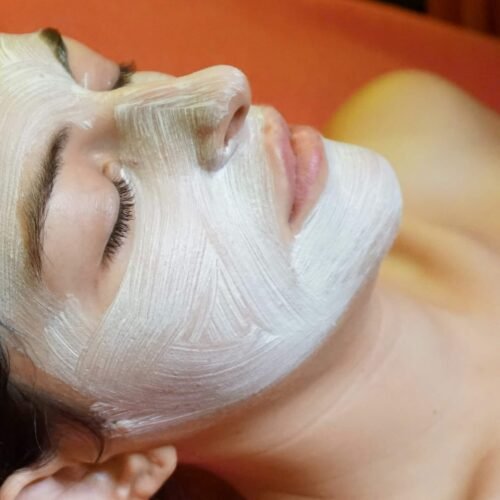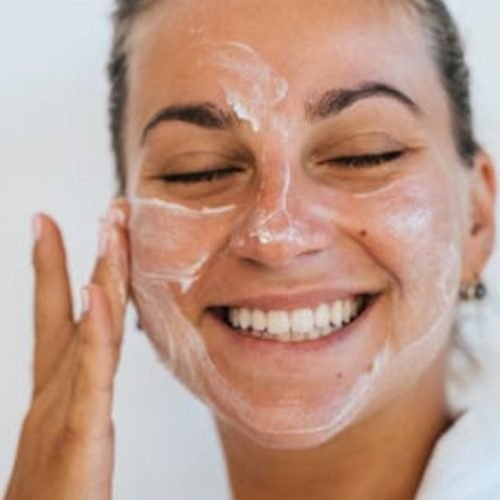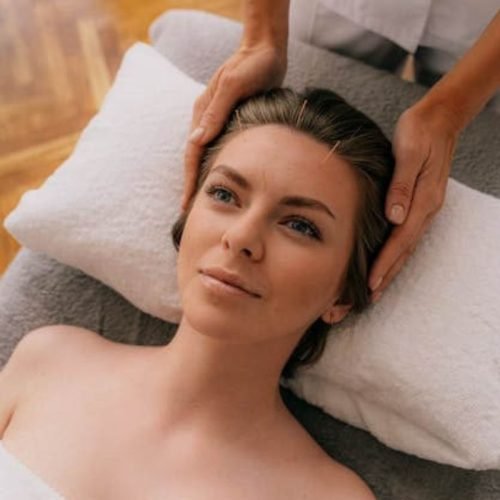If you are looking for a non-invasive treatment to achieve a radiant complexion, an enzyme facial should be on your list!
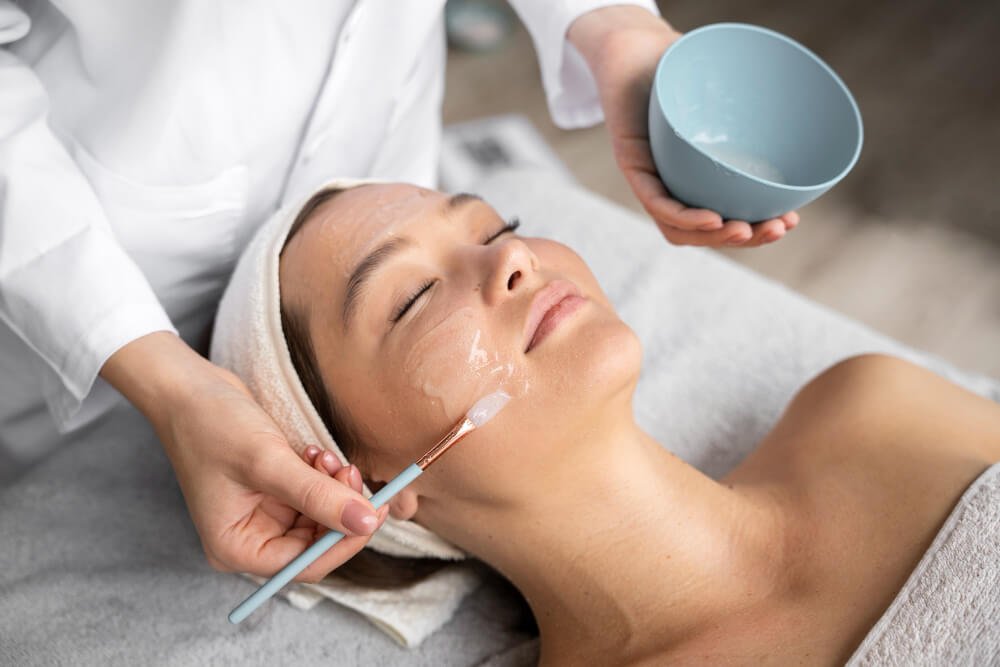
Also referred to as an enzyme peel, this procedure rejuvenates, plumps and promotes younger-looking skin. Skincare expert Debbie Thomas told British Vogue, “Peels are a type of exfoliation; instead of using a physical scrub to remove skin cells, a peel uses a chemical liquid (either acid or enzyme) to remove the dead cells”.
If you want to know, what is an enzyme facial? Or considering getting one, read on to discover all the transformative benefits your skin can expect.
- What is an Enzyme Facial Treatment?
- What to Expect: Before, During and After an Enzyme Facial?
- The Benefits of an Enzyme Facial
- DMK Enzyme Therapy Treatment
- Enzyme Facial vs Chemical Peels
- How Often Should I Get an Enzyme Facial?
- How Long Does it Take to See Results From An Enzyme Facial?
- How Much Does an Enzyme Facial Cost?
- What are Enzyme Peels Made From?
What is an Enzyme Facial Treatment?
You may remember enzymes from science class, but if your memory is a little hazy, enzymes are protein molecules that help speed up chemical reactions in the body. Dr Nina Bal, an advanced facial aesthetics clinician, explained to Harper’s Bazaar, “They are a catalyst product. This means that they encourage skin cell renewal and cell turnover”.
An enzyme facial uses natural enzymes extracted from fruits, and key ingredients are pineapple, pumpkin and papaya. The chemical exfoliation process gently lifts dead skin cells on the top layer of your skin. It also removes toxins blocking your pores, improving skin texture and tone and promoting a youthful glow.

As the process comprises a gentle exfoliation, it is deemed suitable for all skin types, including sensitive skin. An article on skincare brand Tracie Martyn says, “Enzymatic exfoliation can be especially beneficial for those with dry, sensitive, and mature skin types, but all skin types can benefit from enzyme exfoliation.”
What to Expect: Before, During and After an Enzyme Facial?
Before an enzyme facial, the dermatologist or aesthetician will conduct a consultation to assess your skin type, check for allergies and determine if the treatment suits your skin. If the clinic doesn’t provide this option choose one that does to avoid any irritated skin or reactions.
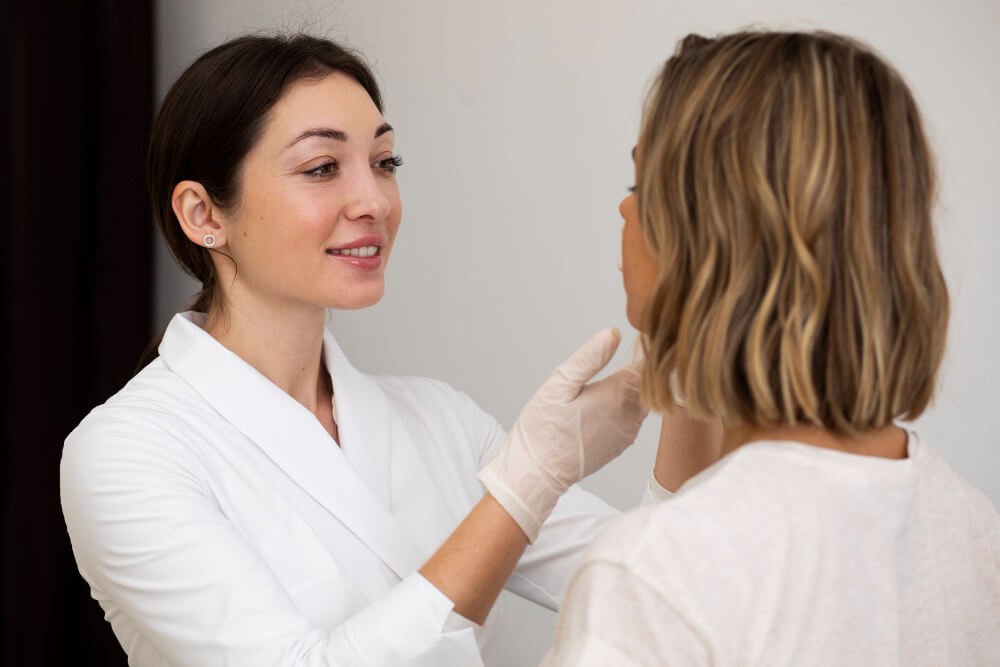
The procedure lasts between 30 minutes and an hour and starts with a deep cleanse and extractions of clogged pores. The aesthetician will apply an enzyme peel solution to your face, which could include the neck and chest. At the end of the treatment, the practitioner will rinse off the peel. Any redness is temporary and will quickly fade, and you can resume your daily life straightaway.
Although enzyme facials are usually problem-free, rare side effects could include skin redness, irritation, dryness, flaking and sensitivity to the sun. Your dermatologist or aesthetician will explain what to do if these happen at your appointment.
The Benefits of an Enzyme Facial
-
Gentle procedure
-
Safe for all skin types, including sensitive skin
-
Stimulates collagen production
-
Improves skin texture and uneven skin tones
-
Promotes softer and smoother skin
-
Improves fine lines and wrinkles
DMK Enzyme Therapy Treatment
In 1970, founder of the skincare brand DMK, Danné Montague-King, created its renowned Enzyme Therapy. You will find many aestheticians and dermatologists offer DMK treatments due to the brand’s innovative concept.
This treatment begins with a thorough cleansing followed by exfoliation to remove dead skin cells. Then the signature DMK Enzyme Mask, a blend of protein and amino acids is brushed onto the face and neck, gently exfoliating dead skin cells generating new skin cells.
As the masque begins to dry it will tighten across the skin, which can be a surprising feeling and has been coined the Game of Thrones Facial, due to people resembling a White Walker. You will also feel a pulsing sensation and DMK explains this is called the Plasmatic Effect, explaining, “You can actually see the capillaries opening up, pumping more blood, oxygen & nutrients into the skin, as well as carrying away impurities. Real Oxygen Therapy from the inside out!”
The DMK Enzyme therapy creates a “a process of reverse osmosis” which flushes dead toxins and fluid from the skin, while encouraging blood circulation, oxygenation and lymphatic drainage.
The treatment is designed to combat issues such as acne, ageing, sun damage, and pigmentation, and cosmetic clinic Skin Divinity says, “DMK doesn’t work on the surface of the skin to treat these symptoms. It works at a much deeper cellular level to treat the imbalance!”
DMK enzyme therapy facials last around 45 minutes, and no downtime is required, so are a great option to have before an event.
Enzyme Facial vs Chemical Peels
Chemical peels have been around for years, and the three types are superficial peels, medium peels, and deep chemical peels. The process uses a chemical solution to remove the damaged outer layer of the skin to reveal a newer and smoother layer underneath.
Chemical peels use stronger ingredients such as glycolic acid and can often leave your skin more sensitive and vulnerable to sun damage.” This treatment requires extra precautions until the skin fully heals, and this aftercare guide by Sk:n Clinics explains all the steps in further detail.
An enzyme facial is a gentler skin treatment that uses plant-based enzymes to rejuvenate the skin and help improve skin conditions such as acne, ageing, and pigmentation. After the procedure, you can expect some temporary redness, but no downtime is required.
Medical Aesthetic Clinic, Hedox Clinic, says on their blog, “An enzyme peel is better than a chemical peel because it’s not as harsh on the skin.
Everyone should be wearing SPF every day, no matter the weather or what treatments we get; read our guide to find the best sunscreen to suit your skin.
How Often Should I Get an Enzyme Facial?
You will get the best results by having the treatment on a regular basis. Pure Skin Beauty & Spa recommends, “Your first two Enzymes are one to two weeks apart to kickstart the oxygen flow through the skin and increase the skin’s cellular processes. For ideal results during a treatment program, treatments are recommended weekly or fortnightly.”
Enzyme facials are a gentle procedure, so they are safe to have as often as every couple of weeks. Creating a habit of once a month is advised, as the outer layer of skin entirely renews itself around every 28 days.
How Long Does it Take to See Results From An Enzyme Facial?
You can expect positive visible effects after one facial, but you will see the best results 3-5 days after; six treatments should be enough to see great results.
How Much Does an Enzyme Facial Cost?
The cost of an enzyme facial will differ depending on the location, clinic and treatment. Prices in the UK typically start at £65-£295 per session.
What are Enzyme Peels Made From?

Enzyme peels are made from natural ingredients and are a great way of avoiding harsh chemicals and cosmetic procedures. Fruit enzymes typically used for this treatment include pineapple, papaya, and pumpkin, so let’s break down what they do for the skin and their unique benefits.
Pineapple Enzymes are rich in vitamin C, essential for collagen production and help improve skin texture and reduce signs of ageing. Bromelain is a natural enzyme found in pineapple that soothes redness and inflammation and removes dead skin cells.
Pumpkin Enzymes are alpha-hydroxy acids (AHAs) and contain zinc, vitamin A and vitamin C. These enzymes treat acne, promote collagen production, and make great exfoliators that slough off dead skin cells for a brighter and smoother complexion.
The Papain Enzyme derives from the papaya and is a popular skincare ingredient due to its exfoliating qualities that brighten the skin. It also has anti-inflammatory properties, an effective ingredient for blemish-prone skin and acne.
Now you have all the fruity facts on what is an enzyme facial. We hope you are ready to book your treatment so your skin can discover the power of enzymes and all their enriching benefits.
Disclaimer: All the content published on www.thestylecadet.com is solely for information purposes. It is not a substitute for professional medical advice, diagnosis, or treatment. Always consider seeking the advice of your doctor, qualified healthcare provider or dermatologist. The information, suggestions, or remedies mentioned in this article are provided without warranty of any kind, whether expressed or implied.
